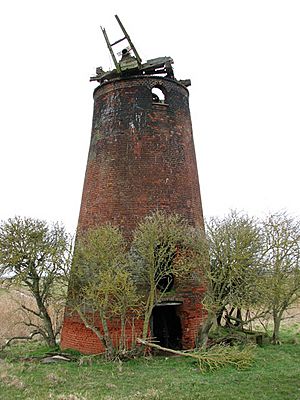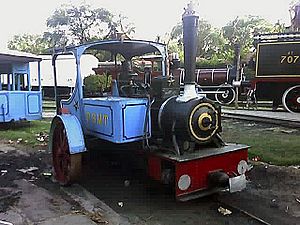William Thorold (engineer) facts for kids
Quick facts for kids
William Thorold
|
|
|---|---|
| Born | 9 October 1798 Methwold, Norfolk
|
| Died | 17 December 1878 (aged 80) Norwich, Norfolk
|
| Nationality | English |
| Occupation | Engineer |
| Spouse(s) | Susannah |
| Children | Thomas Telford Thorold, (second son d.1829), Ellen Thorold (second daughter, d.1866) |
| Engineering career | |
| Discipline | Architect, civil engineer, millwright |
| Institutions | Institution of Civil Engineers (member) |
| Projects | The New Cut on the River Yare, The Acle Straight, several windmills built, designed a number of workhouses. |
William Thorold (born October 9, 1798 – died December 17, 1878) was an important engineer from the 1800s. He lived in Norwich, England. William Thorold worked as a millwright, an architect, and a civil engineer.
He was born in 1798 in Methwold, Norfolk. His father was a farmer. William learned his skills by becoming an apprentice. This means he worked for experienced people to learn their trade. He worked for George Shafto and John Fisher Gurling. From 1828 until his death in 1878, he ran his own business as a millwright.
Contents
Building Mills and Windmills
William Thorold was very good at building and fixing mills. In 1830, he built a post mill in Felthorpe. The next year, in 1831, he built a tower drainage windmill in Limpenhoe. These windmills were used to pump water away from land.
He also helped fix watermills. These are mills that use the power of water to work. He worked on watermills in Bawburgh in 1829, Taverham in 1842, and Oxnead in 1849. William Thorold was also involved with a steam-powered mill in Norwich in 1836. This was called St James' Yarn Mill.
Designing Buildings
William Thorold also worked as an architect. This means he designed buildings. Between 1836 and 1837, he designed several workhouses in Norfolk. Workhouses were places where poor people could live and work.
He designed workhouses in places like Thetford, Pulham Market, and Rockland All Saints. He also designed one in Rochford, Essex, in 1837. It is possible he also designed the St James' Yarn Mill in Norwich.
Engineering Big Projects
William Thorold was a skilled civil engineer. He built the Acle Straight road between Acle and Great Yarmouth. This project happened between 1830 and 1831. He also dug a new channel for the River Yare in 1843. This new channel was called the New Cut. It helped the Norwich and Yarmouth Railway avoid building two expensive swing bridges.
William Thorold became a member of the Institution of Civil Engineers. This is a group for professional engineers. He joined before 1845. In the early 1860s, he also worked on drainage projects. These projects helped manage water in areas like Ten Mile Bank and Middle Level.
Ideas for Monorails
In 1868, William Thorold shared an interesting idea. He presented a paper about "Railways on Turnpike Roads" to the British Association. He suggested a monorail system. This system would have a single rail on the ground. It could go around tight corners and up steep hills.
He thought animals or steam engines could power these monorails. He believed India would be a good place for such a system. Two monorail systems were later built in India. One in Kharagpur used mules to pull the trains. The other, the Patiala State Monorail Trainways, used special steam locomotives. These locomotives had a unique design. One of these locomotives is still preserved today. You can see it at the Indian National Railway Museum in New Delhi.



